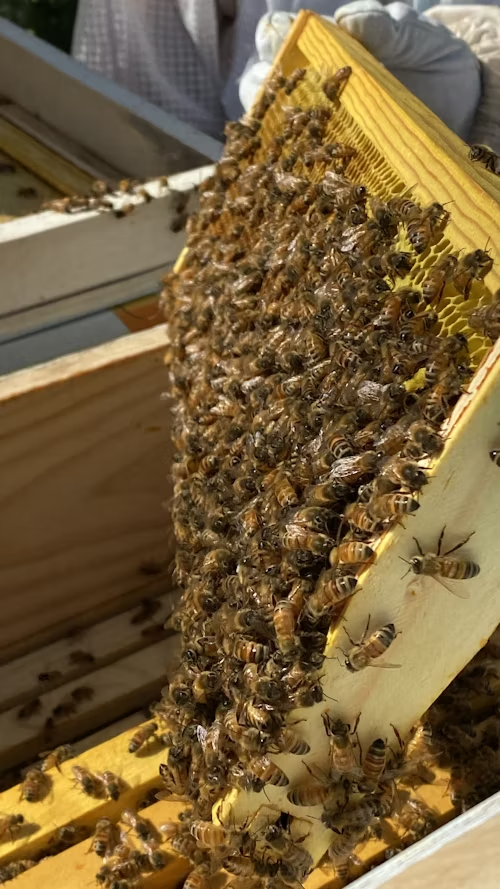Beekeeping, or apiculture, has steadily grown into one of Kenya’s most promising agricultural ventures. With minimal land requirements, high-value byproducts, and vital ecological benefits, bee farming offers both profit and sustainability. This guide walks you through every crucial step — from preparation to marketing — to help you build a thriving bee enterprise in Kenya.
1. Understanding Bee Farming in Kenya
Why Bee Farming?
Bee farming is an attractive agribusiness because it requires low initial investment, small space, and provides multiple income streams. Honey is the primary product, but bees also yield wax, propolis, pollen, and royal jelly, all of which are in demand for cosmetic, medicinal, and food industries. Moreover, bees significantly enhance crop yields through pollination, creating synergy between beekeeping and other types of farming.
Kenya’s climate and flora make it ideal for beekeeping. Regions like Kitui, Baringo, Makueni, Kakamega, and Taita Taveta are naturally endowed with wildflowers and acacia trees that sustain bees year-round.
Preferred Species
The African honeybee (Apis mellifera scutellata) is the dominant species in Kenya. Known for its hardiness, productivity, and disease resistance, it thrives in diverse environments, from arid zones to highlands. With proper management, a single hive can yield up to 30 kilograms of honey per year, depending on floral availability and hive type.
2. Preparing for Your Bee Farm
Choosing the Right Location
Location is key to productivity. Select an area that has abundant floral resources like acacia, eucalyptus, sunflower, and fruit trees, provides reliable water sources nearby, is free from pesticide contamination, offers good morning sunlight and protection from strong winds, and is secure and slightly isolated from human or livestock interference.
If possible, integrate beekeeping with existing farms to maximize pollination and crop yields.
Acquiring Knowledge and Training
Invest in practical training to master the art of bee management. Attend workshops at institutions such as Baraka Agricultural College, the National Beekeeping Station, and county agricultural departments. Key areas to study include bee biology, hive management, pest control, honey harvesting, and product value addition.
3. Setting Up Your Apiary
Choosing and Procuring Hives
Kenya offers several hive types, each with unique advantages: traditional log hives (cheap but hard to inspect), Kenya Top Bar Hives (affordable and beginner-friendly), and Langstroth hives (modern and productive). For beginners, the KTBH strikes the best balance between cost, efficiency, and manageability.
Essential Equipment
Protective gear, smokers, hive tools, honey extractors, and clean containers are essential for safe and efficient beekeeping.
Hive Placement
Raise hives 30–50 cm off the ground, space them 2–3 meters apart, face entrances away from strong winds, and ensure shade with nearby vegetation.
4. Acquiring Honeybee Colonies
Buy nucleus colonies from reputable breeders or trap wild swarms using bait hives lined with beeswax. Transfer bees gently, preferably in the evening, and minimize disturbance as they settle.
5. Managing and Caring for Bee Colonies
Regular Hive Inspections
Inspect hives every 2–3 weeks to check queen health, brood patterns, food stores, and early pest signs. Keep records for tracking performance.
Feeding and Watering
During dry seasons, provide sugar syrup or honey substitutes, and ensure clean water sources near the hives.
Pest and Disease Control
Common threats include wax moths, ants, and varroa mites. Apply integrated pest management through hygiene, biological control, and safe treatments.
6. Harvesting Honey and Byproducts
Timing the Harvest
Harvest during seasons (March–May and October–December) and only from capped honey cells.
Harvesting Process
Use light smoke to calm bees, remove frames carefully, and extract honey within 24 hours to maintain quality.
Other Products
Bees also provide beeswax, propolis, pollen, and royal jelly, all of which have lucrative markets.
7. Marketing Your Bee Products
Identify Target Markets
Sell through local markets, supermarkets, coffee houses, and cooperatives. Demand exceeds supply in Kenya.
Branding and Packaging
Label jars clearly with product name, weight, and producer details. Use glass or PET containers for quality preservation.
Value Addition
Offer flavored honey, beeswax candles, or propolis tinctures to access premium markets.
Building Customer Relationships
Engage with buyers through farm visits, social media, and storytelling to foster loyalty.
8. Scaling and Sustainability
Expand gradually, plant nectar-rich trees, avoid pesticides, join cooperatives, and explore online marketing. Sustainable bee farming enhances both income and environmental conservation.
Summary
Profitable bee farming in Kenya blends knowledge, discipline, and sustainability. With proper management, healthy colonies, and strong marketing, you can turn beekeeping into a rewarding and eco-friendly agribusiness.

